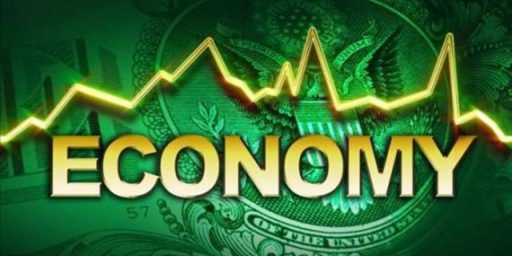Economic Growth
The Bureau of Economic Analysis is reporting that economic growth for the last quarter was good at 3.4% growth.
Real gross domestic product — the output of goods and services produced by labor and property located in the United States — increased at an annual rate of 3.4 percent in the second quarter of 2007, according to advance estimates released by the Bureau of Economic Analysis. In the first quarter, real GDP increased 0.6 percent.
Of course, keep in mind these are advanced estimates and they can, and have been, revised downwards. For example, in reading a bit further into the release we find this,
The acceleration in real GDP growth in the second quarter primarily reflected a downturn in imports, upturns in federal government spending and in private inventory investment, accelerations in exports and in nonresidential structures, and a smaller decrease in residential fixed investment that were partly offset by a notable deceleration in PCE.
The import part is important to note since imports would actually be a negative in calculating GDP. That is a decline in imports means that net exports increases which would mean an increase in overall GDP. And is it good that one reason why growth is higher is due to higher government spending? Both of these don’t strike me as all that good. Increases in exports is good, but the decline in the growth personal consumption expenditures (PCE) isn’t all that good a news either.
Bottom line as I see it is that this is mildly good news. Not great, and not bad, but there are still reasons to be cautious about the future of the economy. For one thing, oil prices are quite high and there is some reason to think they wont be coming down substantially anytime in the future. And the housing market still appears to be in the doldrums.



In the last couple of years, the trend seemed to be the GDP numbers came in low and then increased as they were revised. Any special reason you think this report will break that trend? I realize that going up, down or even staying the same is all possible. But the trend would seem to be revised upwards.
Also note the downward revisions over the past year.
We were looking at a Y/Y real gdp increase of 1.9% at the end of the first quarter. That was revised down to 1.5% and even including the second quarter pop the y/y is now 1.8% — less than we though a week ago.
Yes, there was the case where GDP numbers for the 4th quarter of 2000 were revised downwards substantially. So, to rule out the idea of downward revisions is probably not a good one.
Note especially that a major component of the increase was an increase in government expenditures (as has been the case for the last five or six years). That and an increase in expenditures for services (a good deal of which is for health care which is heavily subsidized). I don’t see that as a formula for prosperity.